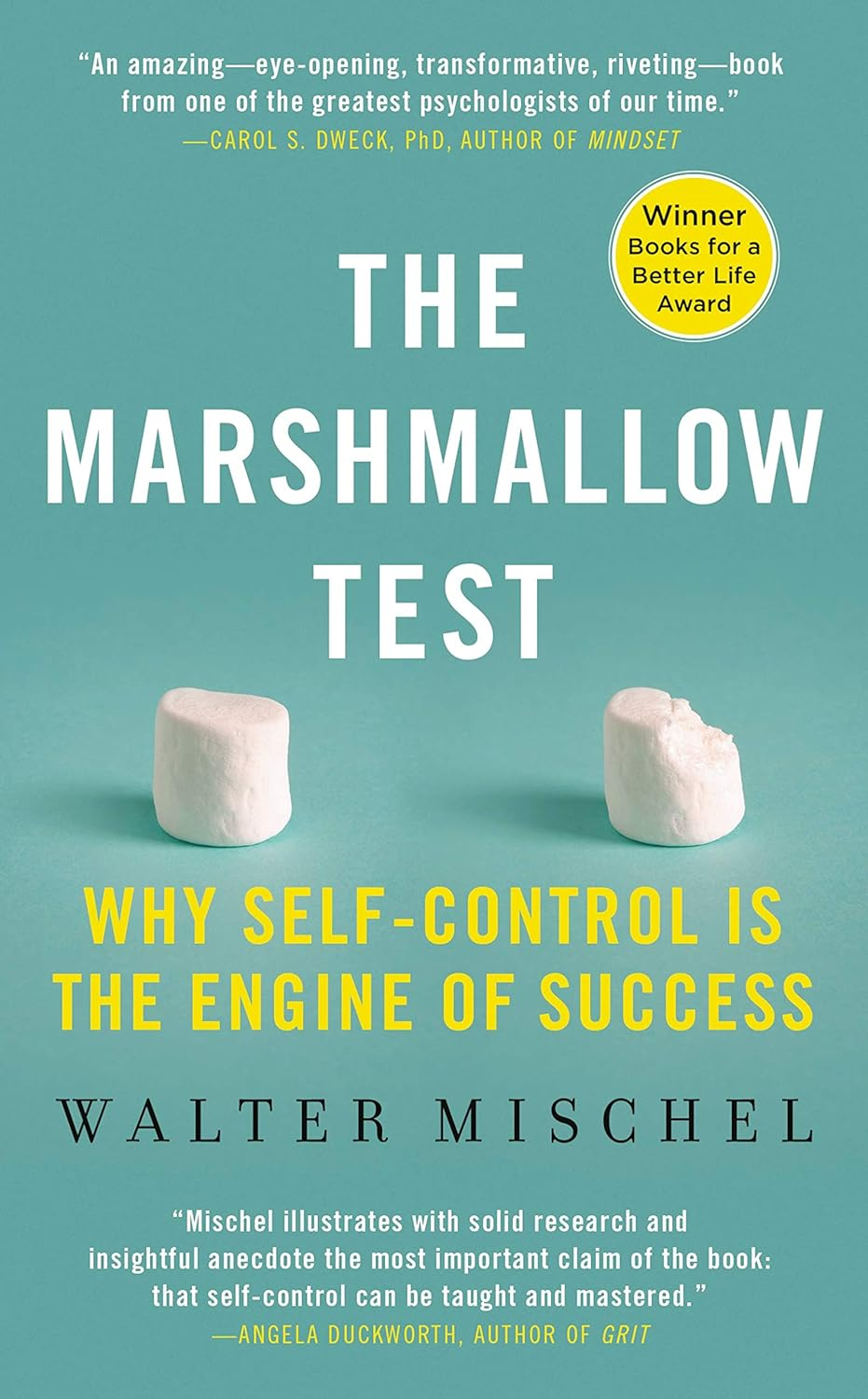← The Marshmallow Test Mastering Self Control
The Marshmallow Test Chapter 16. The Paralyzed Will
Author: Walter Mischel Publisher: New York, NY: Little, Brown and Company. Publish Date: 2014-9 Review Date: Status:💥
Annotations
207
HOT CONNECTIONS
208
When such hot connections form between an innate fear response and a previously neutral stimulus, we can become as helpless as the dogs in the laboratory studies of “classical fear conditioning” that took place early in the last century. The unfortunate dogs received an electric shock every time a buzzer sounded, and they soon became the buzzer’s emotional victims: even when it no longer signaled electric shock, they still became terrified. Willpower and cooling skills do not help people overcome this kind of collateral damage. Bridgeman’s bridge-crossing behavior was no longer within his control; it was under stimulus control, ruled automatically and reflexively by his hot system. Consequently, all his efforts to exert willpower and be tougher failed, making him increasingly desperate, even fearing that he was losing his mind.
209
Cheever’s story anticipated cognitive behavior therapy by many years and flew in the face of the then-dominant medical disease model of psychological problems. In the medical model, it is essential for the physician to separate the presenting complaint and its potential cause, and then illuminate the cause. For example, for a patient with symptoms of back pain caused by a cancerous tumor, prescribing painkillers rather than removing the cancer of course would soon prove disastrous. But for psychological conditions that cripple the individual, the presenting complaint—like the terrifying fear of bridges—often is the problem that has to be addressed and removed.
209
The belief that the medical model of illness also applied to phobias was widely shared for many years. The prevalent worry about simply treating the behavior problem, the “symptom,” was that this would lead to substitution of another symptom and much worse problems. It was assumed that the underlying causes had to be in early childhood traumas of which the individual was unconscious, and that these causes had to be uncovered with a long analysis.
209
REWIRING THE CONNECTIONS
210
In 1958 Joseph Wolpe, a psychiatrist who became skeptical about psychoanalytic theory, took the risk of attempting direct behavior modification with patients who suffered from anxiety and panic attacks like those in Cheever’s story. Wolpe proposed: “If a response antagonistic to anxiety can be made to occur in the presence of anxiety-evoking stimuli so that it is accompanied by a complete or partial suppression of the anxiety responses, the bond between these stimuli and the anxiety responses will be weakened.”
210
Wolpe thought that deep muscle and breathing relaxation exercises could help patients develop the needed antagonistic responses to anxiety, and then slowly the relaxation response would become connected to the feared stimulus until the fear dissipated. In this type of therapy, the relaxation response is at first connected to stimuli that are only remotely related to the traumatic stimulus (e.g., pictures of small bridges over calm, shallow ponds bathed in sunshine). Then, step by step, as anxiety about these milder versions of the threat is overcome, the patient moves to the next, more fearful representation of the stimulus—until finally the relaxation response is linked to thinking about, and ultimately actually approaching, the feared stimulus itself. And at this point, if it is the George Washington Bridge, the patient can cross it in a relaxed state. As Cheever’s story suggests, this slow process sometimes can be dramatically shortened when the relaxing event, antagonistic to anxiety, arrives full blown in the form of a lovely angel who sings you across the bridge, more likely in fiction than in life.
211
Cheever’s story was a preview of what soon became the standard approach for overcoming all sorts of phobias, without having to wait for an angel. In many studies the panicked person was put into a safe situation in which he or she observed bold models who slowly but fearlessly, step by step, approached the feared stimulus and demonstrated that they could remain calm and unharmed. At about the same time that the marshmallow experiments were being done at Stanford, Albert Bandura, my colleague while I was there for more than twenty years, was doing studies of preschool children who had become terrified of dogs. From a safe distance the preschoolers observed as a model fearlessly approached a dog. At first the model (a graduate student assisting in the research) just petted the dog a bit while the animal remained confined in a playpen, and then gradually she joined the dog in the playpen, affectionately hugging it and feeding it treats. The children who were watching overcame their fears rapidly and soon were hugging and petting dogs themselves. Bandura and his colleagues achieved similar results even more economically for a wide variety of fears in both children and adults by exposing the frightened participants to fearless models acting out scenarios on films. These studies became important foundations for the treatment of fears in cognitive behavior therapies.
212
Bandura’s research showed that the best way to overcome phobias is to first observe the fearless model and then, with the model’s guidance and support, try it and master it yourself. Using a variety of “guided mastery experiences,” both children and adults overcame not just fears of dogs, snakes, spiders, and so on but even the most profound and disabling anxiety disorder, agoraphobia: the fear of going outdoors.
